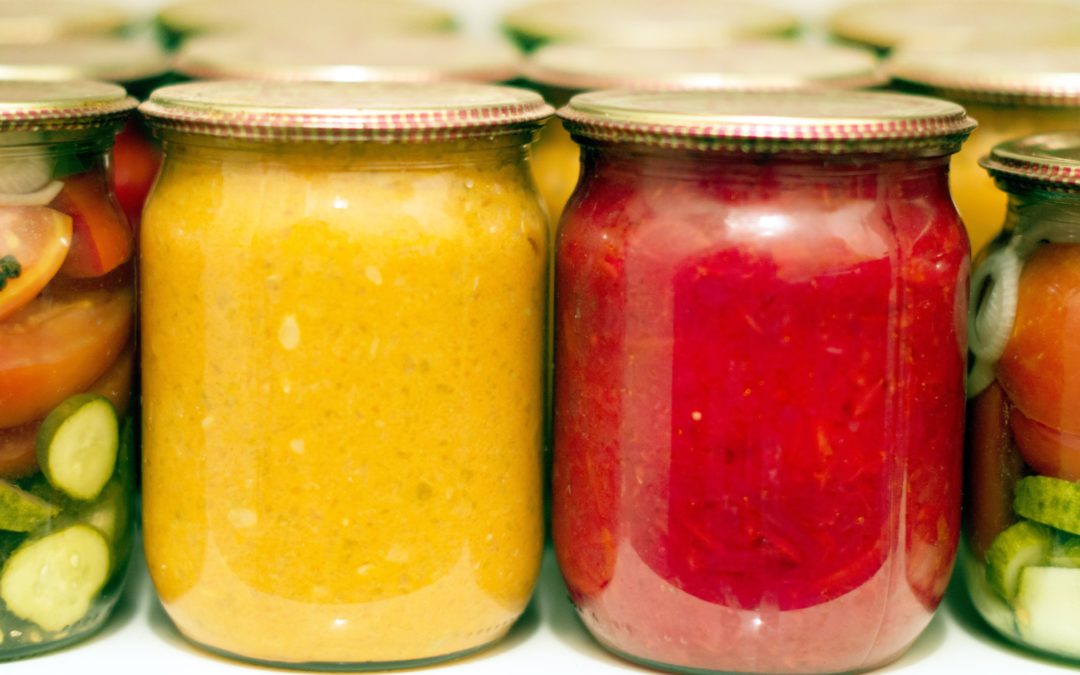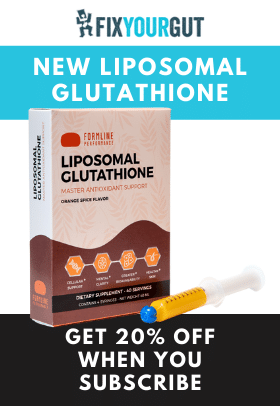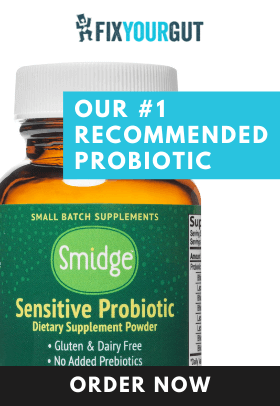Updated 2025
Clostridioides difficile (C. difficile) infection cases are increasing throughout the United States, causing a current healthcare crisis. An extensive, nationwide health insurance database analysis by the University of Pennsylvania determined that the annual incidence acute C. difficile infections increased by almost two hundred percent from 2001 to 2012. “C. difficile causes over 500,000 infections per year in the United States alone, resulting in an estimated 29,000 deaths and an estimated cost of $1–3 billion.” There are many different contributing factors to why there is such an alarming increase in C. difficile infections. Overuse of antibiotics, which weaken our normal probiotic flora that keeps the bacteria in check, and proximity to multitudes of people within hospitals, mixing our microbiomes are significant causes of the increase in infection rate. Remember, our probiotic microbiome produces many different bactericides and stimulates our immune system to reduce or eliminate the pathogens that we come in contact within our everyday lives. C. difficile is being discussed as a potential pathogen that can be acquired as a foodborne illness since it can infect pigs and cattle that we ingest and can be found in commercially tested meat. The bacteria have also been found in improperly treated drinking water and raw sewage. C. difficile dysbiosis can be challenging to remedy; many people spend weeks or months in the hospital trying to recover from an infection. So what is causing the increase in C. difficile dysbiosis, and what can be done to keep people from getting it as often? In addition, what protocols can someone follow to relieve C. difficile dysbiosis?1 2 3 4
All About Clostridioides difficile
Clostridioides difficile is an opportunistic Gram-positive bacteria generally found within the microbiome of at least two to five percent of the adult population. The bacteria was first called Bacillus difficilis by Ivan C. Hall and Elizabeth O’Toole in 1935. The bacteria was named difficilis because it was difficult to isolate and grew slowly within the culture medium. André Romain Prévot eventually transferred it to the genus Clostridium, which became commonly known as Clostridium difficile. It was recently changed to Clostridiodes difficile after being transferred to the new genus Clostridioides. Clostridioides are anaerobic (do not like oxygen), motile bacteria, and ubiquitous. C. diff forms unique rod-shaped endospores, produces biofilm, produces toxins, and is found within soil.5 6 7 8 9
C. diff produces two toxins when they are vegetative cells and not encapsulated in endospores that can cause significant health issues, including Clostridioides difficile toxin A and Clostridioides difficile toxin B. TcdA gene encodes C. diff toxin A and TcdB gene encodes C. diff toxin B. The toxins also are capable of reducing or eliminating some organisms within our native flora as well. Both toxins bind to specific host cell receptors within the digestive tract, where the toxins then enter the cell and induce cytopathic and cytotoxic effects. Since both toxins increase cellular oxidative stress and trigger premature cell death, they can cause inflammation (increase in immune function and cytokine production in response to the toxins) and cellular destruction within the colon, leading to colitis and within the small intestine, leading to ileitis, for example, which is sometimes severe finally, if the toxins enter into the bloodstream from someone having a “leaky gut” they can cause toxemia, heart, kidney, and brain inflammation and damage.10 11
Endospores (not a true spore) are dormant Gram-positive bacteria generally from the Firmicutes phylum. The endospores are tough encapsulations that protect spore-forming bacteria from your immune system, antibiotics, antibacterials, and your microbiome. Spore-forming bacteria can lay dormant in endospore form until their environment becomes favorable for faster reproduction and survival. Spore-forming bacteria form endospores when there is a lack of nutrients and can survive a long time until they get the nutrients they need to survive (the amino acids l-alanine, l-valine, l-asparagine, glycine, and fructose are some of those nutrients); they will germinate and multiply. Clostridioides difficile are resistant to stomach acid, but interestingly, stomach acid-reducing medications, including H2 antagonists and proton pump inhibitors, have been linked to increasing the risk of C. difficile dysbiosis. Researchers believe it is because they interfere with normal gastrointestinal microbial diversity. People on these medications long term seem to suffer from dysbiosis, which allows C. difficile to thrive because of a lack of a probiotic microbiome. Endospores are likely to germinate within the colon from repeated exposure (if enough colony-forming units are ingested) or supplementation. The bacteria may also share a commensal relationship with probiotic bacteria for a time and continue to replicate when nutrients are available. Bacterial endospores are resistant to ultraviolet radiation, desiccation, many antibiotics, boiling, extreme freezing, and most chemical disinfectants. For example, bacteria in the Clostridia class are spore-forming; it becomes difficult to eliminate them if they become opportunistic and return to their spore form.12 13 14 15
Clostridioides difficile germinates when exposed to bile (unlike other endospore bacteria that are a part of the Bacillus genus for example that perish when exposed to bile), the natural sugar trehalose, or the amino acid glycine within our small intestine. Once C. diff germinates, it attempts to colonize the large intestine (a perfect anaerobic environment for it). Usually, our immune system and our microbiome keep C. diff from being dysbiotic flora so that it does not have the opportunity to become opportunistic. Our digestive tract eliminates C. diff through defecating. However, if our immune system is hindered or our gut microbiome is severely disrupted (from taking antibiotics for example), C. diff either colonizes our gut or if it is already native intestinal flora germinates and causes acute infection and/or dysbiosis.”Because C. difficile is an obligate anaerobic pathogen, the vegetative cells are unable to survive outside of a host in the aerobic environment. When C. difficile cells meet certain environmental stimuli (e.g., nutrient deprivation, quorum sensing, and other unidentified stress factors), they will initiate a sporulation pathway to produce sufficient dormant spores to survive in extreme situations. C. difficile pathogenesis relies on the formation of aerotolerant dormant spores which allows C. difficile to persist within the host and to disseminate through patient-to-patient contact/environmental contamination. In the host GI tract, the dormant spores must germinate from dormancy to form the actively growing vegetative cells which produce the toxins that cause the primary symptoms of the disease. Under suitable conditions, when germinant receptors sense the presence of small molecules (germinants), spore germination will be induced.“16
Though C. diff dysbiosis is generally found within the large intestine, it can be found within the small intestine. There are many reported cases of it being able to colonize the ileum. It is unknown how far within the upper gut C. diff can colonize. Still, it appears that in most cases, it can inhabit no farther than the small intestine (the rest of the upper digestive tract, like the stomach, is exposed to more oxygen from swallowing food, which can kill C. diff). One of the appendix’s functions is to be a “safe house” for probiotic flora to colonize after a foodborne illness. In a study conducted in 2011, when C. difficile was introduced into the gut, the appendix housed cells that increased the body’s antibody response to eliminate it. The appendix’s B cells stimulate toxin A-specific IgA and IgG antibody production, leading to an increased probability of probiotic flora surviving and overcoming C. difficile. Finally, here is a conclusion from a study discussing C. diff small intestine colonization: Finally, here is a conclusion from a study discussing C. diff small intestine colonization: “Small intestinal C. difficile seems to be increasing in incidence. The spectrum of CDI has definitely expanded with small bowel involvement. Heightened public awareness and initiation of prompt preventive measures are the keystones to control of this infection. This disease is no longer limited to the colon and physicians should be educated to think beyond the colon in patients with CDI.“17 18 19
How to Properly Diagnose and the Symptoms of Clostridioides difficile Dysbiosis and Infection
Symptoms of an acute Clostridioides difficile infection and dysbiosis include severe diarrhea (makes up 20% of cases of antibiotic-resistant diarrhea), abdominal pain, fever, nausea, vomiting, colitis, ileitis, malabsorption, bloating, abdominal distension, weight loss, small intestinal bacterial overgrowth, colonic overgrowth, and a distinctive foul stool odor. If you have these symptoms and have had recent antibiotic therapy (clindamycin (highest known risk of all antibiotics), fluoroquinolones, cephalosporins, aztreonam, carbapenems, macrolides (except Dificid,) sulfonamides/trimethoprim, and penicillins all have increased risks of causing C. difficile dysbiosis), use of acid-reducing medication including H2 antagonists and proton pump inhibitors, compromised immune system, recent abdominal surgery, prior appendectomy, or recent hospitalization, then it is likely you have a C. difficile infection. Finally, many gastroenterologists are unaware that C. difficile in cases of chronic dysbiosis and severe infection can cause constipation instead of diarrhea, sometimes quite severe.20 21 22 23 24
Clostridioides difficile dysbiosis, in some instances, can cause a “reconstruction,” swelling, and extreme inflammation of the colon, a medical condition known as pseudomembranous colitis. Exogenous “mucous membranes” (very intricate biofilm colonies) are produced by C. difficile, further protecting it from your immune system, probiotic flora, and antimicrobial agents and causing severe colitis. If your C. difficile infection is severe, it can cause a condition known as toxic megacolon, a life-threatening medical condition where the colon swells considerably and hemorrhages, causing blood loss and perforations (holes within the intestinal tract where organisms can enter the bloodstream and surrounding organs) causing sepsis.25 26
Clostridioides difficile is generally diagnosed through symptomology, medical history, ELISA tests for C. difficile toxins A and B (make sure both are tested), culture, and biopsy during colonoscopies or endoscopies, and diagnostic scanning, including abdominal X-ray or computed tomography (CT) scan with contrast (I would recommend supplementing with iodine if possible before the CT scan with contrast and afterward, if they use Iodine-131 to protect your thyroid) to determine the health of your digestive tract and the extent of the infection. Remember, if you test positive for the C. difficile toxins, have elevated Clostridium in stool testing, and have many of the above symptoms, then C. difficile dysbiosis might be the cause of your digestive issues, even if you are suffering from chronic constipation.27 28
Clostridioides difficile is resistant to many antibiotics, creates biofilms, and can form endospores to survive treatment, which makes it very difficult to recover and has a recurrence rate of around twenty percent. C. difficile infections are severe and, in most cases, are treated at a hospital. Supplements and lifestyle changes may help prevent the infection from occurring when you are hospitalized. If you are hospitalized or are on strong antibiotics for an extended period, supplementation of the probiotic supplement Smidge (taken separately during the day from the antibiotics) should be considered to help prevent opportunistic C. difficile infection. One or two servings daily of fermented food ingestion or kombucha, when ingested away from your antibiotic, may help as well. You can also supplement with thirty milligrams of exposure, and doing your best to maintain proper sleep hygiene can help as well. Excessive dietary or supplementation of calcium can also stimulate C. difficile’s germination. I would also refrain from ingesting foods that contain more glycine, including protein powders or collagen, large amounts of dietary fructose, or trehalose (a sugar that is found in honey) because they can improve C. difficile chances of colonization or virulence. Proper handwashing (I do not recommend conventional antibacterial soap) can help reduce your chances of contracting C. difficile’s. Hand sanitizer can work against germinated C. difficile but does nothing to eliminate C. difficile spores; proper hand washing is always superior. Finally, I would avoid iron-fortified foods, and carrageenan, which cause gut inflammation and try to follow the Perfect Health Diet if possible.29 30 31 32 33 34 35 36 37
Finally, I generally do not recommend fecal microbiome transplantation because I have read a multitude of studies and anecdotal evidence and coached many people who have had it done with minimal positive results, especially in people with chronic dysbiosis. However, since Clostridioides difficile primarily colonizes the colon (where fecal microbiome transplantation appears to work best) and fecal microbiome transplantation for C. difficile is backed by research from many studies and reports of anecdotal evidence, it appears that the appropriate use of fecal microbiome transplantation might be highly effective in people suffering from C. difficile dysbiosis and infection. Fecal microbiome transplantation for C. difficile should be considered when all other options have failed to relieve the dysbiosis.38 39
Clostridioides difficile Dysbiosis Protocol
Medication Recommendations
- If your C. difficile dysbiosis is in the small intestine, I recommend the use of the antibiotic rifaximin – take as directed (push for the use of rifaximin if possible; it has been shown through multiple studies that it can help eliminate C. difficile with fewer side effects then metronidazole (Flagyl) or vancomycin).40
- Fidaxomicin (Dificid) – a fermentation product obtained from the Actinomycete Dactylosporangium aurantiacum subspecies hamdenesis, which is a narrow-spectrum macrocyclic antibiotic. Fidaxomicin seems to be poorly absorbed into the systemic circulation (ninety-two percent is eliminated directly through deification) like rifaximin and seems to have little effect on some of our Gram-negative colonic probiotic flora. “Fidaxomicin has poor activity against aerobic and facultative gram-negative bacilli, Bacteroides species (MIC90 of >1,024 μg/ml), and other gram-negative anaerobes, a feature that might result in a reduced ecologic impact.” Fidaxomicin is effective against Gram-positive bacteria (remember some probiotic bacteria are Gram-positive, including Lactobacillus and Bifidobacteria), especially C. difficile infection and dysbiosis. Fidaxomicin binds to and prevents movement of the “switch regions” of bacterial RNA polymerase (similar to rifamycins), trapping the RNA polymerase “clamp” in the open conformation, not allowing it to close and hold onto DNA, killing the bacteria. Fidaxomicin has only been approved for use by the FDA since 2011, so more studies need to be done to prove its safety; that being said, I recommend fidaxomicin over other antibiotics (other than rifaximin) that are used for the treatment of C. difficile.41 42 43
- Nitazoxanide (Alinia)– an antibacterial, antiarchaeal, antiparasitical, antiviral medication that works well against C. difficile. Nitazoxanide has average antimicrobial side effects associated with its use, including stomach pain, headache, upset stomach, vomiting, discolored urine, excessive urinating, skin rashes, itching, fever, Herxheimer reactions, and rare systemic allergic reactions. Since it binds with plasma proteins, it can increase drug toxicity for other drugs with high plasma binding affinity, including warfarin. Finally, nitazoxanide does not appear to affect the CYP450 system. Therefore, nitazoxanide should not interfere with most medications that require CYP450 proteins for metabolism unless they have high plasma binding affinity.44
- Chenodeoxycholic acid – a bile acid that is effective in inhibiting C. difficile germination. Side effects include allergic reactions, dark urine, constipation, diarrhea, heartburn, reflux, upset stomach, gastritis, bloating, fatigue, loss of appetite, nausea, vomiting, and jaundice. Rarely it can cause liver damage, so have your liver enzymes monitored during use and try to use the lowest therapeutic dose possible. Do not use it if you have gallstones in your bile duct.45 46 47
- Cholestyramine (Questran) – a medication that binds with both bile and C. difficile toxins. Since cholestyramine binds with bile, it may inhibit C. difficile germination. Use with caution if you are suffering from hypothyroidism since it may worsen the medical condition. It can cause constipation and rarely bile obstruction. Finally, do not take cholestyramine at the same time as chenodeoxycholic acid it will bind to it, rendering it ineffective.48 49
- If you cannot use rifaximin (Xifaxan), fidaxomicin, or nitazoxanide (Alinia), then I would recommend the use of metronidazole (Flagyl) instead of vancomycin if at all possible. Vancomycin is bacteriostatic and inhibits the growth of C. difficile but does not outright kill it like fidaxomicin. Vancomycin, in my opinion, should always be used as a last resort because of the risk of side effects associated with it.50
Anti-Biofilm and Anti-Endospore Protocol
- InterFase Plus (use if you do not have any mercury amalgams or are mercury burdened; if you are, then use InterFase instead) – take two capsules between breakfast and lunch and two capsules between lunch and dinner. If needed, take two more capsules one hour before bedtime. You must take InterFase Plus on an empty stomach.
- Lactoferrin – take one thousand to three thousand milligrams daily in divided doses with meals.51
- Biofilm Phase-2 Advanced – follow supplement instructions.
Protocol Recommendations and Supplements
If symptoms have not improved on an antibiotic or natural methods are used to treat C. difficile dysbiosis, then the following antimicrobial agents are effective against C. difficile. I recommend that you talk to your healthcare professional about choosing two or three antimicrobial agents and rotating them with new antimicrobial agents every few weeks until you recover:
- Nature’s Way enteric-coated peppermint oil – thirty to sixty minutes before meals, twice daily. Recommended only if you are suffering from diarrhea.52
- Thorne Research berberine – take five hundred milligrams, twice daily with meals. You can take up to three thousand milligrams daily with meals, but discontinue if berberine causes hypoglycemia or gastritis.53
- Allicin – take one capsule with breakfast and one with dinner. Use with caution if you are suffering from hydrogen sulfide dysbiosis or have CBS polymorphisms.54
- Thorne Meriva curcumin – take one to four capsules total daily in divided doses with meals. Avoid usage if you are suffering from ulcers or have gastritis.55
- Ceylon cinnamon oil – works well in combination with other agents since it is bacteriostatic and hinders the growth of C. difficile but does not kill it. Cinnamon oil also does not broadly affect the probiotic microbiome,. Mix two or three drops well in one half teaspoon of organic extra virgin coconut oil, taken at breakfast and at dinner.56
- Indole 3 carbinol – take one capsule twice daily with a meal. Use with caution if you are suffering from hydrogen sulfide dysbiosis or have CBS polymorphisms. 57
I generally do not recommend the use of the following antimicrobial unless C. difficile dysbiosis is severe since it can strongly impact the probiotic microbiome:
- Zane Hellas oil of oregano – potent, broad-spectrum, systemic antimicrobial agent. Take one to two soft gels with breakfast and take one to two soft gels with dinner.58
Lifestyle changes and supplements that may help you recover from C. difficile dysbiosis
- Proper sunlight exposure and proper sleep hygiene are essential for healthy immune system function.
- Proper vitamin D endogenous production is crucial for immune system function.
- Avoid ingestion of trehalose and honey, although Manuka honey might be fine to use due to it containing greater concentration of antimicrobial agents, including methylglyoxal. Also, avoid ingesting mushrooms and algae, which contain trehalose.
- Avoid ingesting a lot of fruit because they contain fructose. Ingestion of low fructose fruits, including berries, on occasion, is acceptable.
- Avoid ingestion of supplemental glycine or products that contain elevated amounts of glycine, including collagen.
- Avoid ingestion of bile acid supplements, Jarrow Bile Factors, for example. Activated charcoal supplementation used between meals might absorb bile acids within the small intestine and hinder C. difficile germination and help bind and eliminate C. difficile toxins. IP6 supplementation might also help bind and eliminate C. difficile toxins.
- Avoid ingestion of foods that trigger excessive bile release, including oleic acid (olives, avocados), food and meals that are high in fat, ginger, spicy food, coffee, and potatoes.
- Talk to your healthcare professional about discontinuing any stomach acid-reducing medications you are on. Consider supplementing with betaine HCL if you have elevated stomach pH.
- Nutribiotic sodium ascorbate – take a total of four thousand milligrams daily in divided doses with meals.
- Rosita cod liver oil soft gels – take four soft gels daily in divided doses with meals.
- Pure Encapsulations magnesium glycinate – take four hundred milligrams daily before bed.
- S. boulardii probiotic – take while you have active C. difficile dysbiosis or infection as long as you do not suffer from yeast sensitivity or Th2 dominance (histamine intolerance).
- E. coli Nissle probiotic – take while you have active C. difficile dysbiosis or infection.
- Supplementation of the prebiotic supplement Holigos might help improve your probiotic microbiome during C. difficile dysbiosis.
- If you are dealing with a severe acute C. difficile infection or unresolvable dysbiosis research and consider phage therapy.
Fructose, glycine, and trehalose feed C. difficile and allow it to grow and become more virulent.
C. difficile requires bile to germinate and grow.
Ascorbate, omega-three oils, and magnesium reduce intestinal inflammation and improve outcomes.
C. boulardii and E. coli Nissle compete with C. difficile and can help to reduce it.
If Clostridioides difficile dysbiosis infection worsens or frequently reoccurs, consider a fecal matter transplant.
- https://www.pennmedicine.org/news/news-releases/2017/june/cases-of-recurrent-clostridium-difficile-infection-are-soaring ↩
- Poter, S. Robert. The Merck Manual, Merck; 19 edition, July 20, 2011 ↩
- https://academic.oup.com/cid/article/51/5/577/334288 ↩
- https://www.ncbi.nlm.nih.gov/pubmed/23503193 ↩
- https://www.ncbi.nlm.nih.gov/pmc/articles/PMC2935936/ ↩
- Bauman, Robert. Microbiology with Diseases by Body System, Benjamin Cummins, September 12, 2012 ↩
- https://www.semanticscholar.org/paper/Clostridioides-difficile-Biology%3A-Sporulation%2C-and-Zhu-Sorg/cecbf880507eb9eabc1239ee6ab896bbd76b9dc8 ↩
- https://www.ncbi.nlm.nih.gov/pmc/articles/PMC3871928/ ↩
- https://www.ncbi.nlm.nih.gov/pubmed/27370902 ↩
- https://www.semanticscholar.org/paper/Clostridioides-difficile-Biology%3A-Sporulation%2C-and-Zhu-Sorg/cecbf880507eb9eabc1239ee6ab896bbd76b9dc8 ↩
- https://www.ncbi.nlm.nih.gov/pmc/articles/PMC4885049/ ↩
- https://www.semanticscholar.org/paper/Clostridioides-difficile-Biology%3A-Sporulation%2C-and-Zhu-Sorg/cecbf880507eb9eabc1239ee6ab896bbd76b9dc8 ↩
- Bauman, Robert. Microbiology with Diseases by Body System, Benjamin Cummins, September 12, 2012 ↩
- Poter, S. Robert. The Merck Manual, Merck; 19 edition, July 20, 2011 ↩
- https://jamanetwork.com/journals/jamainternalmedicine/fullarticle/2173095 ↩
- https://www.semanticscholar.org/paper/Clostridioides-difficile-Biology%3A-Sporulation%2C-and-Zhu-Sorg/cecbf880507eb9eabc1239ee6ab896bbd76b9dc8 ↩
- https://www.ncbi.nlm.nih.gov/pmc/articles/PMC2664326/ ↩
- https://www.liebertpub.com/doi/full/10.1089/crsi.2016.0006 ↩
- https://www.ncbi.nlm.nih.gov/pmc/articles/PMC3769896/ ↩
- Potter, S. Robert. The Merck Manual, Merck; 19 edition, July 20, 2011 ↩
- Bauman, Robert. Microbiology with Diseases by Body System, Benjamin Cummins, September 12, 2012 ↩
- https://www.ncbi.nlm.nih.gov/pmc/articles/PMC3391391/ ↩
- https://www.pharmacytimes.com/contributor/sean-kane-pharmd/2017/03/which-antibiotics-are-most-associated-with-causing-clostridium-difficile-diarrhea ↩
- https://www.ncbi.nlm.nih.gov/pmc/articles/PMC3769896/ ↩
- Poter, S. Robert The Merck Manual, Merck; 19 edition, July 20, 2011 ↩
- Bauman, Robert Microbiology with Diseases by Body System, Benjamin Cummins, September 12, 2012 ↩
- Poter, S. Robert. The Merck Manual, Merck; 19 edition, July 20, 2011 ↩
- Bauman, Robert. Microbiology with Diseases by Body System, Benjamin Cummins, September 12, 2012 ↩
- Poter, S. Robert The Merck Manual, Merck; 19 edition, July 20, 2011 ↩
- Bauman, Robert. Microbiology with Diseases by Body System, Benjamin Cummins, September 12, 2012 ↩
- https://www.ncbi.nlm.nih.gov/pubmed/28704538 ↩
- https://www.ncbi.nlm.nih.gov/books/NBK144042/ ↩
- https://jamanetwork.com/journals/jama/article-abstract/2675907 ↩
- https://gut.bmj.com/content/64/5/731 ↩
- https://www.ncbi.nlm.nih.gov/pubmed/29070552 ↩
- https://www.ncbi.nlm.nih.gov/pubmed/19263912 ↩
- https://www.ncbi.nlm.nih.gov/pubmed/18245298 ↩
- https://www.ncbi.nlm.nih.gov/pubmed/28704538 ↩
- https://www.ncbi.nlm.nih.gov/pmc/articles/PMC5441021/ ↩
- https://www.ncbi.nlm.nih.gov/pubmed/28704538 ↩
- https://www.ncbi.nlm.nih.gov/pmc/articles/PMC2612159/ ↩
- https://www.nejm.org/doi/full/10.1056/NEJMoa0910812 ↩
- https://www.ncbi.nlm.nih.gov/pmc/articles/PMC3926343/ ↩
- https://www.ncbi.nlm.nih.gov/pubmed/19133801 ↩
- https://jb.asm.org/content/192/19/4983 ↩
- https://www.allinahealth.org/CCS/doc/Thomson%20Alternative%20Medicine/48/10357.htm ↩
- https://livertox.nih.gov/Chenodiol.htm ↩
- https://www.ncbi.nlm.nih.gov/pmc/articles/PMC4885049/ ↩
- https://www.ncbi.nlm.nih.gov/pmc/articles/PMC5331142/ ↩
- Poter, S. Robert. The Merck Manual, Merck; 19 edition, July 20, 2011 ↩
- https://www.ncbi.nlm.nih.gov/pubmed/26759363 ↩
- https://www.ncbi.nlm.nih.gov/pubmed/28489336 ↩
- https://www.researchgate.net/publication/321493913_Berberine_hydrochloride_could_prove_to_be_a_promising_bullet_against_Clostridium_difficile_infection_A_preliminary_study_from_South_India ↩
- https://www.ncbi.nlm.nih.gov/pubmed/28489336 ↩
- https://www.gastrojournal.org/article/S0016-5085(09)62911-5/abstract ↩
- https://www.ncbi.nlm.nih.gov/pubmed/28489336 ↩
- https://pmc.ncbi.nlm.nih.gov/articles/PMC11005816 ↩
- https://www.ncbi.nlm.nih.gov/pmc/articles/PMC3975404/ ↩







didn’t get it diagnosed but my symptoms were dead on for C.Diff after a batch of clindamycin from my dentist.
The supplements can affect hard on the disease if it is detected. Can you tell me how to prevent it beforehand?
I’m learning so much on this site. Thank you!
If I had C.diff 14 years ago, and I did recover (I was 16 at the time), but my digestion has been permanently impaired (breath test positive for SIBO,) does that mean I have C.diff dysbiosis? Or could it be a benign accumulation resulting from impaired motility? My main symptom is horrendous bloating and distention, no matter what I eat, every single time I eat.
I’m researching the elemental diet, and I’m so ready to dive in, but I want to cover all my bases going in. The cost is considerable, so I want to do it right the first time. I’m trying to figure out if antimicrobials, biofilm disruptors, and/or probiotics are necessary/recommended in my case.
I’m confused.
Under “Improve C. difficile Toxin Elimination”… you list
loperamide (Imodium) because it can worsen colitis and cause toxic megacolon.
Why would one take something that could make things worse?
What about tetani? How different C tetani overgrowth treatment from C diff?
I was taking Clindamycin for a Staph infection. About two to three weeks, I came down with C diff. I loss 15 pounds that month. I could not even take a sip of water with …. myself. It was August, I have a small one man lawn business. I almost lost all my customers, because I was so sick. By the way, I live in S.Georgia and it was hotter that ….. Now when I go to the Doctor Clindamycin is on my allergic list.